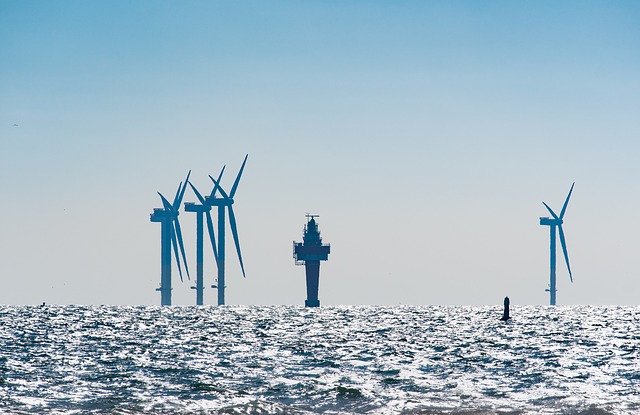China’s National Development and Reform Commission (the NDRC) issued a Circular on Policies of Improving the Electricity Price for On-Grid Wind Power (the Circular) at the end of May 2019. According to the Circular, the price of electricity from offshore wind power projects is cut to 0.8 yuan per kWh [US $0.12 per kWh] in 2019 and will further drop to 0.75 yuan [US $0.11] per kWh in 2020.
The move represents the Chinese government’s first-ever cut in the price of electricity from offshore on-grid wind facilities. Although some insiders are concerned that the new policies will spur offshore providers to rush to install more capacity before 2020, more wind power firms believe such policies will definitely accelerate the construction of offshore wind power projects by 2021.
Following a comprehensive review of offshore wind power resources, China has adopted a policy of incremental reductions in on-grid electricity pricing year by year. For offshore projects receiving regulatory approval before the end of 2018 and connecting to the grid before the end of 2021, the on-grid electricity price has been set at 0.85 yuan [US $0.124] per kWh.
An industry insider who asked to remain unnamed said: “Construction of an offshore wind power project usually needs much longer ramp up time than that of a PV power project. It takes about three months to complete construction of an average PV power farm, while it takes two to three years to finish development of an offshore wind power project. In addition, it needs two to three years to build an offshore wind turbine installation vessel. Considering these factors, it is unlikely for the country to see a rush for capacity installation.”
Given the trend of decreasing subsidies for wind power projects, government support for offshore projects is facing increased downward pressure. Investment costs for offshore projects continue to decrease, thanks to technical advancements, process improvements as well as large-scale applications and fierce market competition. Even so, costs of offshore projects are 100-200% higher than that of onshore peers.
To date, China’s offshore wind power firms have not yet accumulated the needed experience in long-term operation nor collected the necessary extensive data in relation to operation and maintenance (O&M). Furthermore, the offshore O&M market is still at an early stage of development. In addition to higher workloads than onshore O&M, offshore O&M costs are, unsurprisingly, higher than onshore ones.
China’s Shanxi province recently announced a series of new policies in response to the NDRC’s Circular. The new policies will take effect on July 1. Shanxi province, one of Class IV onshore wind power resource areas in China, is set to put in place a pricing system stipulating that the guidance price for electricity from a newly approved wind power project is 0.52 yuan [US $0.076] per kWh (including taxes) in 2019 and will drop to 0.47 yuan [US $0.069] per kWh in 2020. In addition, wind power projects failing to get connected to the grid before the end of 2020 will not be eligible for any national subsidies.




